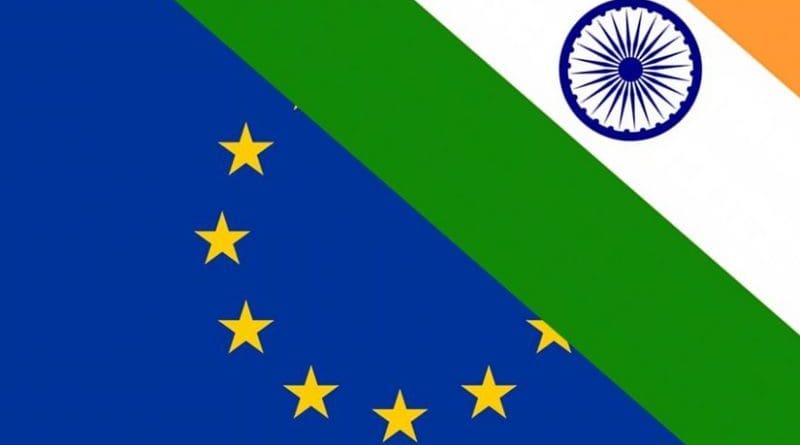How WTO’s IT Tariff Ruling Affects India-EU Trade Relations – OpEd
India-Europe trade ties have been a significant aspect of the global economic landscape, supporting considerable business links between Europe and India, Recent events have strained the trade relations. As a result, understanding the historical importance of the World Trade Organization (WTO) ruling and its consequences for India-Europe trade dynamics is critical.
The World Trade Organization’s ruling favoring the EU in its challenge against India’s tariff on critical information and communication technology products highlights the need for both sides to adhere to global trade standards and levies. The introduction of 20% tariffs on specific items, such as mobile phones, in India has raised concerns about the country’s compliance with WTO obligations. This dispute between India and the European Union (EU), Japan, and Taiwan over import tariffs on IT equipment exemplifies the more significant influence of India’s trade policy on many trading partners and the possible consequences for the global trading system’s stability.
The historical development of commercial links between the two areas is essential in the Overview of the India-EU Commercial Relations context. The commercial connection between India and the EU has grown dramatically, reflecting their shared economic interests and mutual advantages. The commercial links have historical roots that date back to the colonial era. Nonetheless, India and the European Union realized the potential for further economic cooperation throughout the post-independence period. As India’s economy started to open up in the 1990s, the EU became an important commercial partner, providing Indian goods and services with access to a large market. On the other hand, the EU discovered in India a substantial market for its high-quality products and investment opportunities in various industries.
Existing trade agreements and mechanisms currently govern trade between India and the EU. These accords were created to facilitate smoother trade flows, eliminate obstacles, and foster a favorable business climate for both parties. The current debate over India’s tariffs on information technology (IT) items has cast questions on these agreements’ reliability. The violation of global trading rules by India, as highlighted by the WTO ruling, has strained the established mechanisms and has consequences for both EU exporters and European companies exporting to India from other European countries. The estimated annual impact of India’s violations on EU technology exports is up to €600 million. However, the impact is likely much higher when indirect effects on companies using India as an intermediate export market are considered.
Information and communication technology products have emerged as crucial components of India-EU trade in traded commodities. The dispute over India’s tariffs on certain technology products, such as mobile phones, demonstrates the importance of this sector to the bilateral trade relationship. The WTO panel’s conclusion that none of India’s arguments for its tariffs could be valid highlights the complexity and challenges of managing trade relations in this sector. Concerns have been raised about the potential impact on trade between India and the EU of India’s intention to utilize the Info-Tech Agreement to avoid the obligations specified in its WTO schedule and restrict its zero-duty commitment to a narrow set of goods.
WTO panel rules against India’s tariffs on IT products:
The EU, Japan, and Taiwan have claimed that India’s import duties on IT products violate WTO regulations. Since 2014, India has gradually imposed customs taxes ranging from 7.5% to 20% on various IT items such as mobile phones, components and accessories, line telephone handsets, base stations, static converters, and electric lines and cables. The Information Technology Agreement (ITA), which India signed in 1996 and mandated its signatories to eliminate tariffs on IT products, covers these products.
The EU views these duties as directly violating India’s WTO obligations, increasing trade costs and creating barriers for EU exporters. The EU estimates that India’s tariffs directly impact its exports by as much as 600 million euros annually. According to the EU, no WTO exceptions or flexibilities permit India’s actions.
In 2019, the EU filed a WTO dispute settlement case against India (DS582), requesting consultations with India and a resolution to the dispute. The consultations were unsuccessful in resolving the dispute, so the EU requested the formation of a commission to examine the situation. The commission was assembled in November 2019 and began its duties in January 2020.
In 2019 Japan and Taiwan filed similar cases against India (DS584 and DS588). Like the EU’s case, these two parallel instances concern product tariffs and essentially similar items. The WTO consolidated all three disputes into a single procedure, and on April 17, 2023, the panel published its final report to all WTO members.
The panel determined that India’s import duties on IT products violate the Information Technology Act and the General Agreement on Tariffs and Trade (GATT) 1994. The panel determined none of the exceptions or defenses invoked by India to justify its actions was applicable. The commission recommended that India immediately bring its policies into compliance with its WTO obligations.
The commission’s report has not been definitive, as any party may file an appeal within sixty days of its release. Suppose no appeal is filed or the Appellate Body confirms the panel’s findings. In that case, India will be required to comply with the panel’s recommendations within a reasonable time frame or face the possibility of retaliation from the complainants.

